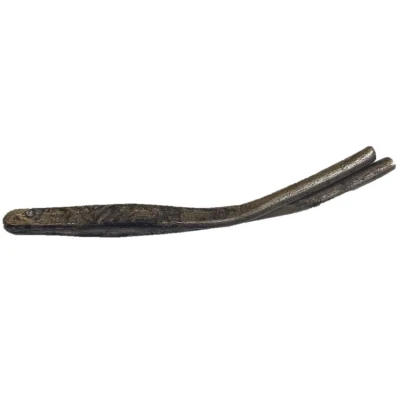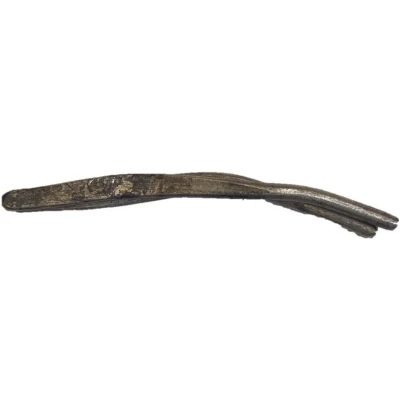


Larin - Mehmed III
1003 (1595) year| Silver | 4.85 g | - |
| Issuer | Basra Eyalet (Iraq) |
|---|---|
| Sultan | Mehmed III (1595-1603) |
| Type | Standard circulation coin |
| Year | 1003 (1595) |
| Calendar | Islamic (Hijri) |
| Value | Larin |
| Currency | Akçe (1535-1688) |
| Composition | Silver |
| Weight | 4.85 g |
| Size | 62 mm |
| Shape | Other (Hairpin) |
| Orientation | Variable alignment ↺ |
| Demonetized | Yes |
| Updated | 2024-10-05 |
| Numista | N#411265 |
|---|---|
| Rarity index | 97% |
Reverse
Very few examples of this type and of this side. It would include the mint and the regnal year.
Script: Arabic
Lettering:
ضرب....
١٠٠٣
Translation:
Struck in []
1003
Comment
There are very few examples of this type, which is identifiable by the tuğra of the sultan partially visible on one side. There were some examples in the Hans Wilski collection, but museum types are few and far between. It is likely that larins produced in Mehmed III's reign were the final type of Ottoman larin until the revival of the type in Süleyman II's reign.
Interesting fact
One interesting fact about the Larin - Mehmed III 1003 (1595) coin from Basra Eyalet (Iraq) is that it features a unique blend of Islamic and Mongolian influences in its design. The coin's obverse side features the name and title of the Sultan, Mehmed III, in Arabic script, while the reverse side features a stylized depiction of a Mongolian-style dragon, which was a symbol of power and strength in the Mongolian Empire. This blend of cultural influences reflects the rich history and cultural exchange that took place during the Ottoman Empire's expansion into the Middle East and Asia.